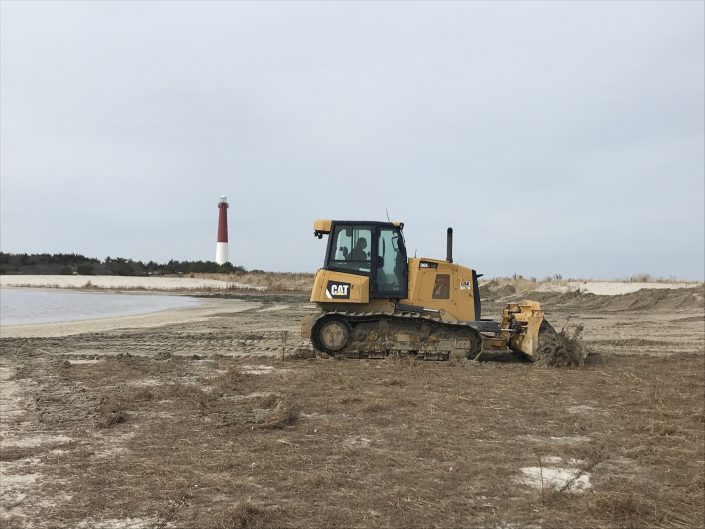Barnegat Light Habitat Maintenance – Prepping for Piping Plovers
By Todd Pover, Senior Wildlife Biologist
When the Barnegat Light habitat restoration was completed to benefit piping plovers several winters ago, the partners anticipated it would need periodic maintenance to keep it in optimal condition. As it has turned out, the inlet beach site has needed more frequent attention, an annual winter “touch-up” to prep the site for the nesting season. With this in mind, earlier this month, Todd Pover, CWF Senior Wildlife Biologist was on-site for nearly a week to oversee the habitat work.
The maintenance this winter primarily focused on the two foraging ponds, as those features have proved critical to the success of the plovers utilizing the site. Thick vegetation was mechanically removed from about three-quarters of the perimeter of the large pond. Excessive vegetation can obstruct piping plovers, especially their chicks, from using the pond’s edge to feed. The heavy vegetation can also provide cover for predators. Meanwhile, the smaller pond was filled in with sand due to late fall/early winter storms and tidal surge. Although the small pond has needed to be “refreshed” each winter, this was the first time it had to be entirely re-dug. Experience has shown that having two ponds present at the site – giving plovers alternative feeding options if one pond is not accessible or as productive during a portion of the season – has been a key element in boosting productivity, especially as more plovers chose the site to nest. In addition to the pond work, some vegetation thinning or removal was also completed to enhance the suitability of the nesting areas as plovers prefer sparsely vegetated areas to lay their eggs.
